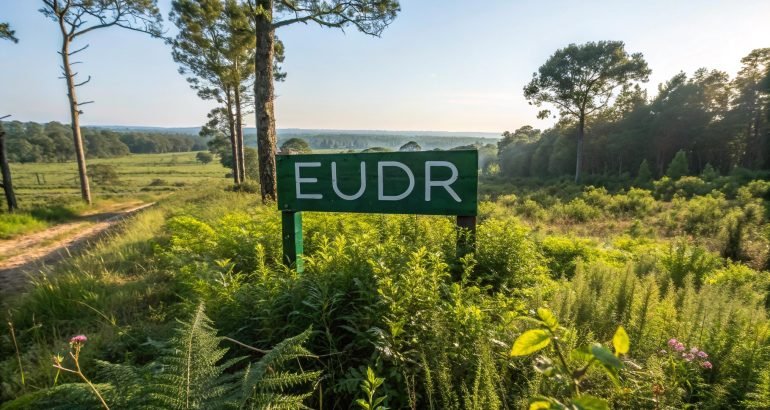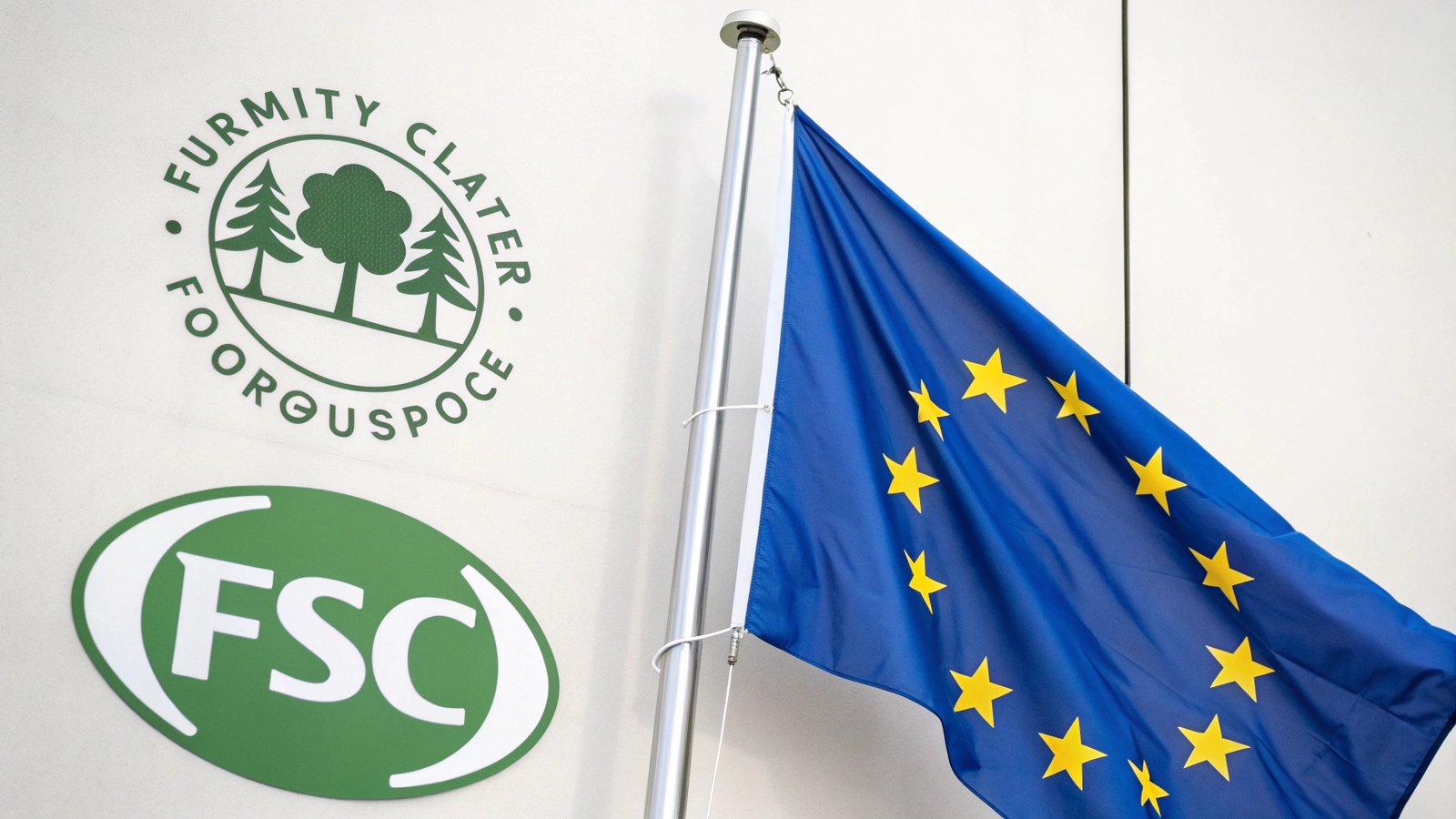Selling books to the EU? The new EUDR regulation could halt your shipments. If you are not ready, you might face major delays and unexpected costs.
EUDR1 is the EU Deforestation-Free Regulation. It requires companies selling goods like books into the EU to prove their products did not come from deforested land. Publishers must ensure their paper supply chain is compliant to avoid having their books blocked from the EU market.
I’ve spent my whole life in the printing business, seeing regulations come and go. The EUDR feels different. It’s a fundamental shift in how we think about our materials. It’s not just about a logo on the paper; it’s about the entire journey from the forest to the bookshelf. Many of my clients, like Stephanie, a production director in the US, have been asking me about this. They are worried about what this means for their upcoming projects. Let’s break down what this new rule really means for all of us in the publishing world.
What are the main requirements of the EUDR?
Confused by the EUDR’s legal jargon? You are not alone. Understanding the specific rules is tough, and ignoring them could mean your books are rejected at the border.
The key requirement is a "due diligence" statement. You must collect precise geolocation data for the land where the wood for your paper was harvested. This proves it’s from a deforestation-free area. This information must be traceable and verifiable throughout your entire supply chain.
This "due diligence" is the core of the EUDR. It’s much more than just getting a certificate. It means you have a legal responsibility to actively gather detailed information, verify it, and assess any potential risks. If you find a risk that materials are linked to deforestation, you must take real steps to reduce that risk to a negligible level before placing your books on the EU market. This process isn’t just a suggestion; it’s a legal obligation.
Let’s break down the key steps involved:
1. Information Collection
This is the most demanding part. You need to go beyond just knowing the country of origin. The regulation requires the specific plot of land where the timber was harvested, identified by exact geolocation coordinates. For every book order destined for the EU, this data must be available.
2. Risk Assessment
With the data collected, you must analyze it. Is the forest located in a region known for high rates of deforestation? Are there local issues like land rights conflicts with indigenous peoples? You have to consider a wide range of factors to determine the level of risk.
3. Risk Mitigation
If your assessment finds more than a negligible risk, you cannot proceed. You must take action. This could mean conducting independent surveys, requesting more data from your supplier, or ultimately, finding a new, low-risk supplier. The responsibility is on you to prove you have managed the risk properly.
How is the EUDR different from FSC certification?
You use FSC-certified paper, so you think you’re safe, right? Unfortunately, that might not be enough. Relying solely on old certifications could leave you non-compliant with the new EUDR rules.
FSC1 is a voluntary certification for responsible forest management. EUDR is a mandatory government regulation for market access into the EU. While FSC is helpful, EUDR requires specific, legally binding due diligence, including precise geolocation data, which FSC certification alone does not guarantee.
I get this question a lot from publishing partners. For years, we’ve all relied on the Forest Stewardship Council (FSC) to show our commitment to using paper from well-managed forests. It has been a cornerstone of our sustainability efforts. But EUDR is a different kind of tool. It’s not a voluntary program you join to improve your brand image; it’s a legal requirement for doing business in one of the world’s largest markets.
The biggest difference is the level of detail and legal accountability. Think of it this way: FSC certification is like a diploma from a respected school. It shows that your supplier has met a certain set of standards over time. EUDR, on the other hand, is like a legal affidavit you must personally sign for every single shipment. You are legally swearing that you have checked the specific origin of the materials for that specific product and can prove it.
Here is a simple table to highlight the key differences:
| Feature | FSC (Forest Stewardship Council) | EUDR (EU Deforestation-Free Regulation) |
|---|---|---|
| Type | Voluntary, non-governmental certification | Mandatory government regulation |
| Focus | Responsible forest management practices | Proving products are "deforestation-free" |
| Key Requirement | Chain of Custody tracking system | Due Diligence statement with plot-level geolocation |
| Consequence | Marketing claim, brand reputation | Legal market access to the EU |
So, while working with FSC-certified suppliers is an excellent starting point and can significantly help with your risk assessment, it doesn’t automatically make you EUDR-compliant. You still need to do the extra work of gathering and verifying that specific geolocation data for every order.
How can publishers prepare for the EUDR?
The EUDR deadline is approaching. Feeling overwhelmed and unsure where to start? Inaction now could lead to a scramble later, putting your entire EU sales pipeline at risk.
Start by talking to your printing and paper suppliers immediately. Ask them about their EUDR compliance plan and if they can provide the required geolocation data. Also, keep a close watch on the official enforcement date, as it has already been delayed once.
Preparation is everything. This is not a regulation you can adapt to at the last minute. As someone who manages a complex printing supply chain every day, I can tell you that open communication is your most powerful tool right now. The time to start building a compliant supply chain was yesterday. The next best time is today.
Here are the concrete steps I’m recommending to all my publishing partners:
- Talk to Your Printer Now: This should be your first call. Ask them direct questions: "What is your plan for EUDR compliance? Can you guarantee that the paper you use for my books will meet all EUDR requirements, including providing geolocation data?" Their answer will tell you how prepared they are.
- Map Your Supply Chain: Work with your printer to get a clear picture of where your paper comes from. You need to know more than just the paper mill. You need traceability back to the pulp mill and, ultimately, to the very forest plots the wood was sourced from.
- Share Information and Collaborate: Many suppliers, especially smaller ones or those outside the EU, might not be fully aware of the EUDR’s detailed requirements. If you learn something new from a webinar or official source, share it. A well-informed supply chain is a resilient one. I’ve found that being proactive with partners like Stephanie helps us all get ready together, strengthening our business relationships.
- Stay Updated on Official Timelines: The rules and timelines can change. The full enforcement date has already been pushed back. Don’t rely on industry rumors. Bookmark the official EU Commission website for EUDR and check it regularly for the latest, most accurate information.
How will the EUDR actually affect the publishing industry?
What does this all mean for your bottom line? This new regulation isn’t just about paperwork. It could change costs, timelines, and even who you can work with.
Expect potential price increases for compliant paper as supply might be limited at first. You may also face longer production lead times due to added data collection. Publishers will need to be more selective about their supply chain partners, favoring those who are transparent and EUDR-ready.
This regulation will send ripples through our entire industry, changing the way we operate. From my perspective as a third-generation printer, I see a few key impacts coming our way, and it’s best to be realistic about them.
First, there is the issue of cost. Setting up and managing systems to track and verify geolocation data for every batch of pulp is a significant investment for paper mills and suppliers. Those who invest in becoming compliant will likely pass those costs down the chain. Furthermore, if only a limited number of suppliers are fully compliant when the law takes full effect, simple supply and demand dictates that their prices will increase. We all need to budget for a potential rise in paper costs.
Second, we must consider the impact on timelines. The due diligence process adds extra steps to production. Collecting and verifying data takes time. This could easily add days or even weeks to your production schedule. We will all need to plan our projects with more buffer time to avoid missing launch dates.
Finally, it will fundamentally change business relationships. Publishers will need to work much more closely with their printers. The days of simply sending a design file and getting a price quote are over. This new era will require a true partnership built on trust, transparency, and shared responsibility. You will need a printer who can be your guide through this new regulatory landscape, not just a vendor.
Conclusion
EUDR is a major shift for the publishing industry. It demands transparency and proactive planning. Start talking with your suppliers now to ensure your books continue to reach your European readers.










